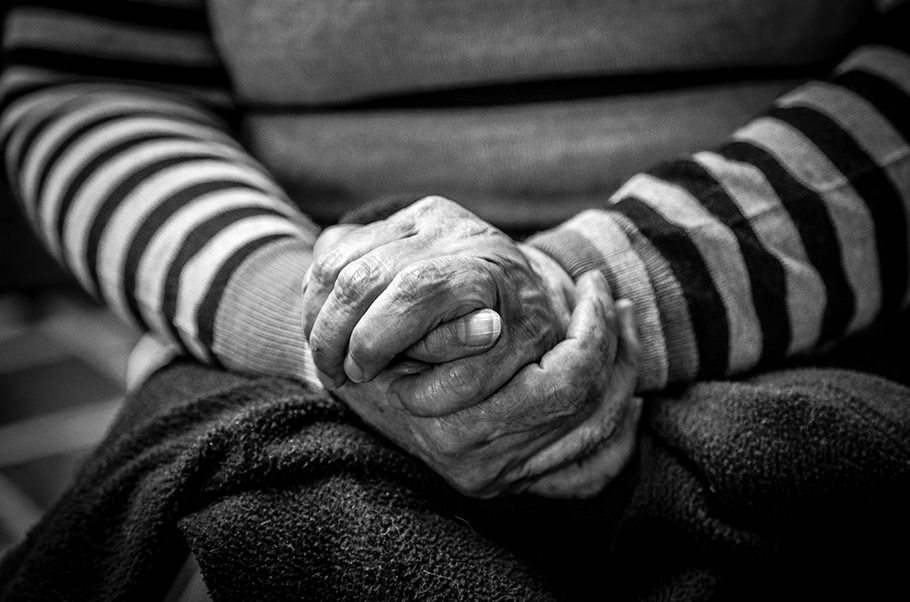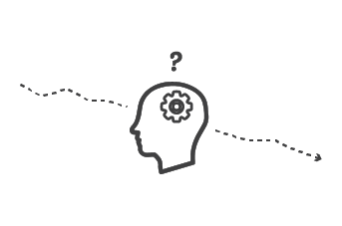
Turning the tide on tragedy
blog | Words Nick Webb | 01 Mar 2018
How do we create thriving societies for good mental health? We need to stop working person to person and take a more holistic approach, supporting connected groups of individuals, friends, families, neighbourhoods and caregivers.
Last Spring my Mum took her own life. She was 70, living alone in a retirement village, wheelchair-bound, with MS, and severe depression. One evening in April she mixed wine with too many pills and put a plastic bag over her head, just to make sure. I still can’t believe she did it. I know I will always struggle to understand. After all, she gave me life. I loved her first before anyone else. I still love her. I feel wrong to be here when she is not.
As a child, I remember arguments with imaginary enemies at the kitchen sink. I remember her not being there. I remember her voicelessness as well as her rage. I remember her telling me as a teenager that life was pointless and if she were braver she would end it all. In fact, she had tried long before, when I was a toddler, but my Dad found her just in time, and she survived. Why would a mother do this when her three children were so small, when they really needed her?
In this blog I would like to suggest three things that would help people like my Mum, or as we like to say, people with ‘complex needs’ or ‘severe and enduring’ mental health problems. The three things apply equally across services, communities and citizens; they are: compassion, ‘stickability’ and connectedness. Compassion is a value, stickability is a behaviour, and connectedness is a feature.
I argue that we are mistaken when we falsely oppose the world of communities (commonly characterized as places where relationships happen), and the world of services (which we tend to think of in terms of structures and delivery). The reality is, of course, that relationships are everywhere and we are all in them. And structures of one kind or another bind everyone (think for example of families, workplaces and clubs, and all the rules of engagement that they maintain).
COMPASSION
January 2018 saw the launch of the Power Threat Meaning Framework (PTMF), which puts forward a new way of thinking about ‘emotional distress, unusual experiences and troubled and troubling behaviour’. The framework, developed by a team of psychologists, survivors and academics, encourages professionals to ask: What has happened to you? How did it affect you? What sense did you make of it? And, What did you have to do to survive? It brings into view the ways in which power imbalances in people’s lives can undermine emotional well-being (where power can be coercive, legal, economic, social, interpersonal and so on).
I like the framework very much, and have found it tremendously helpful in understanding Mum’s ill health as her unique response to what she experienced and felt threatened by. It has helped me accept more compassionately the set of destructive behaviours that she developed in order to survive. In particular, I’ve got closer to her suffering by bringing to mind the events that shaped her life for the worse.
The list includes: a controlling father in childhood who stopped her pursuing her life’s ambitions, the enforced caring role she took, as the oldest of four siblings, in place of her absent parents, the death after only six weeks of her second baby, the alcoholism, domestic violence and near complete lack of financial freedom she experienced in marriage, the MS and loss of mobility she developed in her 50s, and the excruciating shame she felt of being sectioned by the state in her 60s … all far too much.
As the PTMF authors point out, much of the clinical language of mental health is unhelpfully negative; symptom, psychopathology, illness, disease, disorder, problem, remission, relapse, crisis, risk. The negativity of the clinical model at least has the virtue of mirroring the reality of negative life experiences (like my Mum’s). But its claim to scientific and objective distance feels at odds with something that we all instinctively know is highly subjective and deeply personal (our mental health). People who understand our story help us more than people who can tell us what category of illness we have. Asking ‘What happened to you?’ (rather than ‘What’s wrong with you?’), is still a ‘deficit’ lens, but one that encourages awareness and compassion for a person’s struggle with tragedy and injustice. And compassion inspires ambition to help.
STICKABILITY
Joy Hibbins, founder of Suicide Crisis, fights tenaciously to stop people taking their own lives. This means doing everything she and her team can to bring them back from the brink, to save them from themselves in their darkest hour. She doesn’t let go. And she’s had great success; no one in contact with her service has committed suicide in the last four years. Truly impressive.
Mental health professionals, especially clinicians, sometimes worry about letting go of their patients too soon. “What would happen if I stop seeing this patient? Might they come to harm? Better keep them under my care, just in case. After all, I was only able to accept them into my service when their illness had become really bad, so why would I rush to let them go?”
It is also true that professionals sometimes find it hard to develop empathetic relationships with the people they are there to help. This is understandable. Service users can bring terrible personal pain and suffering and ask their carers, however unconsciously, to share in it. Better to design sets of interlinking but separate specialist services that allow professionals to experience only a little bit of someone’s whole pain, and only for a limited time, before referring them on to someone else.
As part of Innovation Unit’s work to develop an asset-based approach to children’s social care in Wigan, we ran a series of workshops to share professionals’ knowledge about individual ‘cases’. It quickly became clear that procedures and systems made it difficult for them to generate valuable insights about the whole child; their backstory, interests, likes and dislikes, ambitions and aspirations. In a moment of moving clarity, one of Wigan’s fantastic social workers commented that it felt like “local authorities are not able to hold the deep loss and trauma” that neglected and abused children often bring. It’s almost as if the widespread fragmentation and lack of integration we see across the public sector has been designed on purpose, not as strategic choice, but as secret protection against pain.
Happily, Wigan’s new model will embrace the ‘stickability’ that has proved so important in North Yorkshire County Council’s highly successful and independently evaluated No Wrong Door model. A key worker will stay with the child no matter what, no matter what time of the day or night, no matter how bad the crisis or how much self-inflicted.
But it is disingenuous to criticize public services for holding on to patients for too long, or for finding it difficult to embrace or stick with the whole person. This is because the same criticism can equally be applied to all of us. We all struggle, at times, to understand others fully, and to maintain strong and nurturing relationships with family, friends, neighbours, work colleagues. We face a common challenge: how to stick with those who need us most.
CONNECTEDNESS
When Mum was sectioned ten years ago, professionals told our family that she was psychotic and needed to be taken to hospital and given medication, which is what happened. It felt like everyone around her (including me) cast her as a dark and dangerous figure, a singularly mad thing. Senior clinicians gave us a diagnosis, but that was about it. The follow-up care from mental health professionals felt half-hearted and ineffectual. Seeing her sitting alone in the hospital garden, head bowed low and motionless, lost and defeated, contributed (along with her clinical diagnosis) to a feeling that she was ‘other’, untouchable and irretrievably ill.
Today’s public policy and service culture give too much weight to the individual as problem. When someone is unemployed, for example, we say it’s because they need to be more ‘resilient’ or ‘hard working’, rather than looking for social and economic causes, including power imbalances that limit personal and collective agency. Or when someone is mentally ‘unwell’, we look for illness within and inside the person, so that wider, external forces remain invisible.
In a sense, one might argue that individualizing (or ‘personalising’) public services is part of the problem, because it reinforces the idea that the state should work 1-2-1 through individuals, rather than more fluidly, equally and holistically with connected groups of individuals, friends, families, neighbourhoods and caregivers. We might also say that the public sector debate about fragmentation versus integration is just as relevant for us, as citizens. We are just as tribal as Service Land, just as prone to strengthen bonds here, and weaken them there.
We risk individualizing people’s problems and the services that respond to them at our peril. The more we understand people’s life stories and their whole context, the more we will understand their joy and their pain. The more we look for connections in people’s lives, the more we will unlock a wider range of creative solutions and resources to support people more effectively. The more compassion that we can generate from this understanding and looking, the longer we will be able to stick with people, to build the trust and engagement that is so essential for preventing crises.
THE FUTURE
I suggest that future thriving societies for good mental health will be places where it is far harder to tell whether someone is a professional/service provider or citizen/service user. Is Good Gym a service or bunch of everyday folk doing helpful things, for example?
Thriving societies will be places where connectedness, or relatedness, is central to service design, job profiles, and the way in which families, friends, neighbourhoods and communities are supported to live and support each other better. ‘Services’ (including the professionals who work in them), will be just as connected, networked and relationship focused as citizens are imagined to be. They will apply tools and practice models – like PTMF – that amplify compassion for people’s whole experience. The responsibility and impulse to stick with someone over the long term will be negotiated, planned and shared by professionals working equally and side by side with significant others in that person’s life. Future financial investment will be redesigned to support this, with echoes of present-day ideas such as participatory budgeting and people powered commissioning.
This future world will give up the fantasy that people in communities are somehow different from people providing services.
It is not easy to turn the tide on tragedy, or to replace loneliness and despair with companionship and hope. Trust me, I know. It’s not easy, but it’s definitely worth working and living for.
An edited version of this blog was published by Independent Voices. You can read it here.

Adult mental health
In Lambeth they have seized the opportunity to transform the mental health care system.
05 Jul 18

Imagining a future system for mental health
At Innovation Unit we marked World Mental Health Day 2017 with a small, informal workshop which brought together a group of passionate advocates to consider new solutions around mental health.
10 Oct 17

How do we create thriving societies for good mental health? We need to stop working person to person and take a more holistic approach, supporting connected groups of individuals, friends, families, neighbourhoods and caregivers.